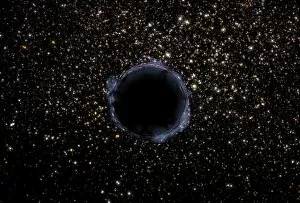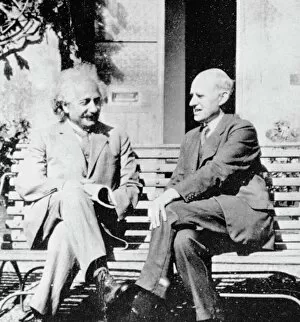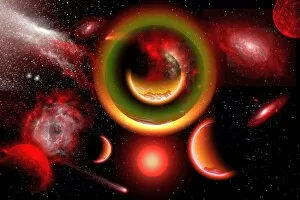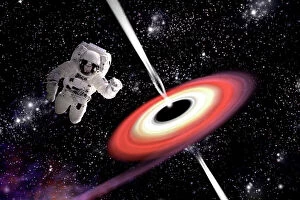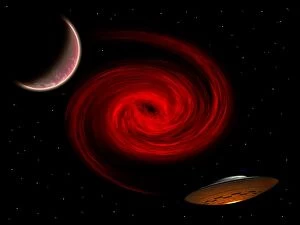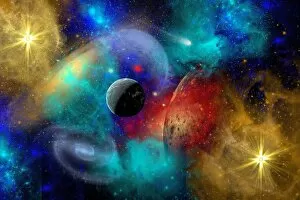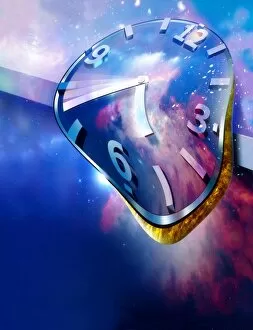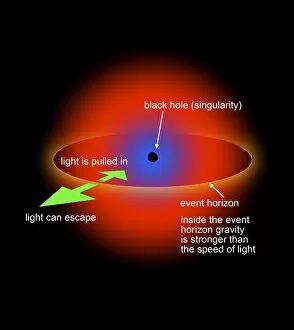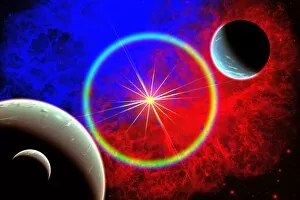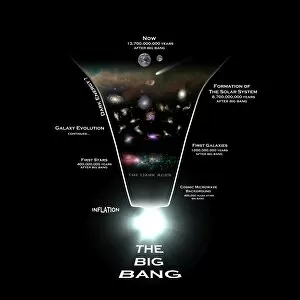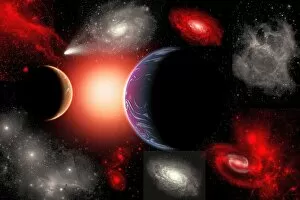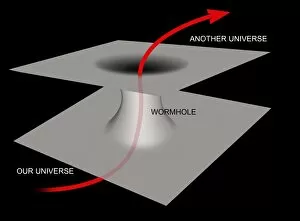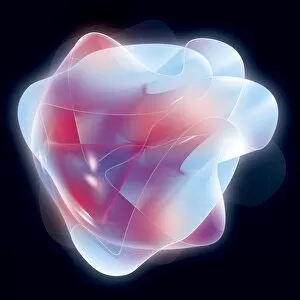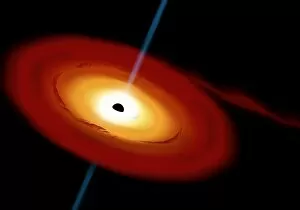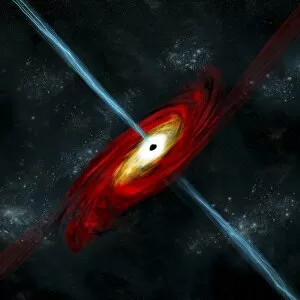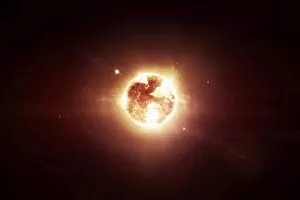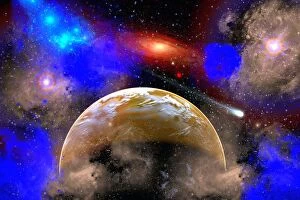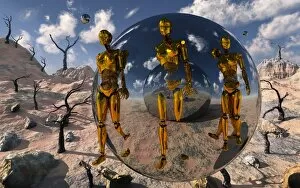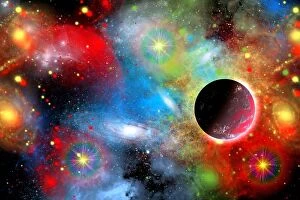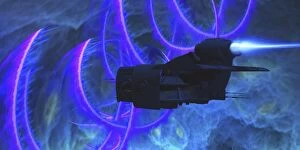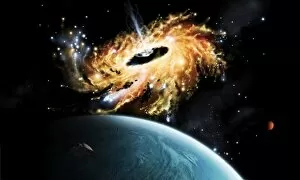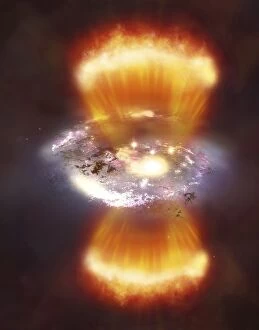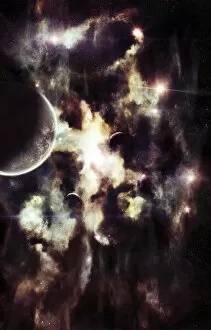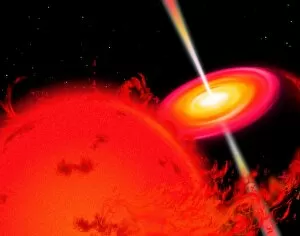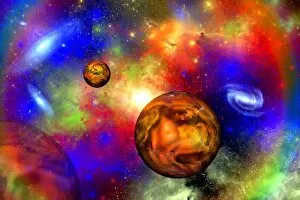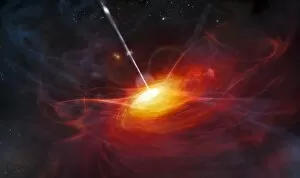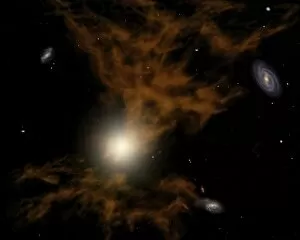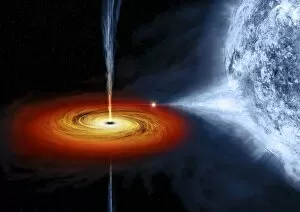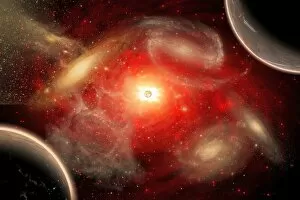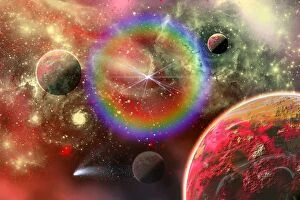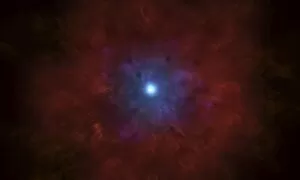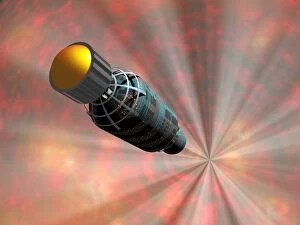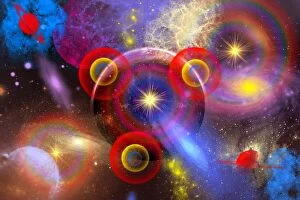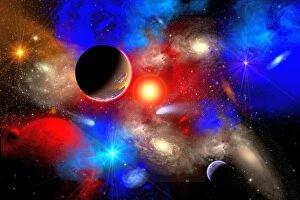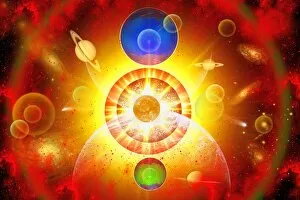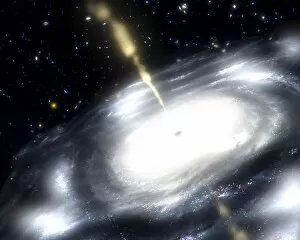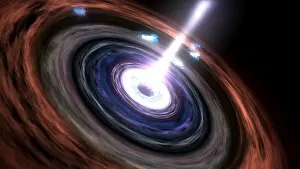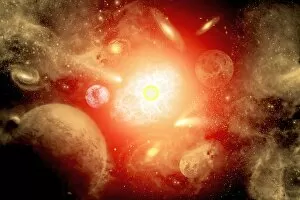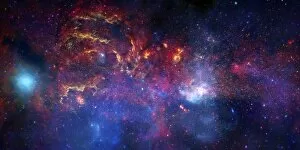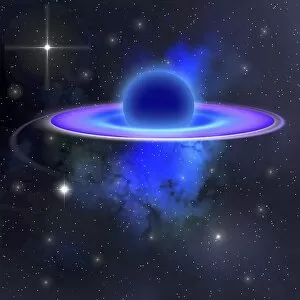Spacetime Collection
"Exploring the Depths of Spacetime: Unveiling the Cosmic Wonders" In 1930
For sale as Licensed Images
Choose your image, Select your licence and Download the media
"Exploring the Depths of Spacetime: Unveiling the Cosmic Wonders" In 1930, Einstein and Eddington revolutionized our understanding of the universe by introducing the concept of spacetime. This captivating notion reveals that space and time are intricately intertwined, forming a dynamic fabric that shapes our reality. The universe, beyond its vastness, is an enchanting realm filled with intense colors and breathtaking beauty. It unveils celestial wonders that surpass human imagination - from distant alien star systems to vibrant planets, galaxies, and nebulae. Imagine an astronaut falling towards a black hole in outer space; it's like witnessing a dance between gravity and destiny. Artists capture this extraordinary phenomenon as they depict astronauts being pulled into the enigmatic depths of these cosmic entities. But what if we could transcend conventional travel methods? Picture a flying saucer utilizing wormhole technology to journey effortlessly through spacetime towards distant worlds. Such concepts ignite our curiosity about what lies beyond our known boundaries. Sometimes, we ponder whether time itself can be warped or manipulated. Conceptual artworks illustrate mind-bending scenarios where time warps create intricate pathways through which one can traverse history or explore alternate realities. Delving deeper into black holes' mysteries leads us to their singularity diagram—a visual representation of their immense gravitational pull devouring everything within reach while leaving behind only questions about what lies inside. As we unravel the history of the universe through diagrams mapping its evolution over billions of years, we gain glimpses into its awe-inspiring origins and transformations—each chapter revealing new secrets waiting to be discovered. Artists bring these cosmic wonders closer to us by creating vivid depictions that transport us across unimaginable distances—an invitation to contemplate both our insignificance in this vast expanse yet also marvel at humanity's ability to comprehend it all. Amongst these illustrations emerges another fascinating concept—the existence of wormholes—hypothetical tunnels connecting different parts of spacetime.

